Download Printable Basil Growing Guide »
Basil is one of the first herbs many new gardeners want to have in their plot—and for good reason! This member of the mint family of herbs is super delicious, very versatile, and incredibly easy to grow.
Of course, you can head over to your local garden center and pick up a basil plant and grow it that way, but we’re here to convince you to try growing basil from seed! Not only is it easy to do and can save you cash, but growing from seed also dramatically increases the number of cultivars you can grow! Sweet basil? Of course! Dark purple basil? Yes! Lime basil? Yum! Giant leaf basil? Yes! Lemon basil? Awesome! There are literally dozens of kinds of basil to experiment with in your garden—so let’s get to growing.
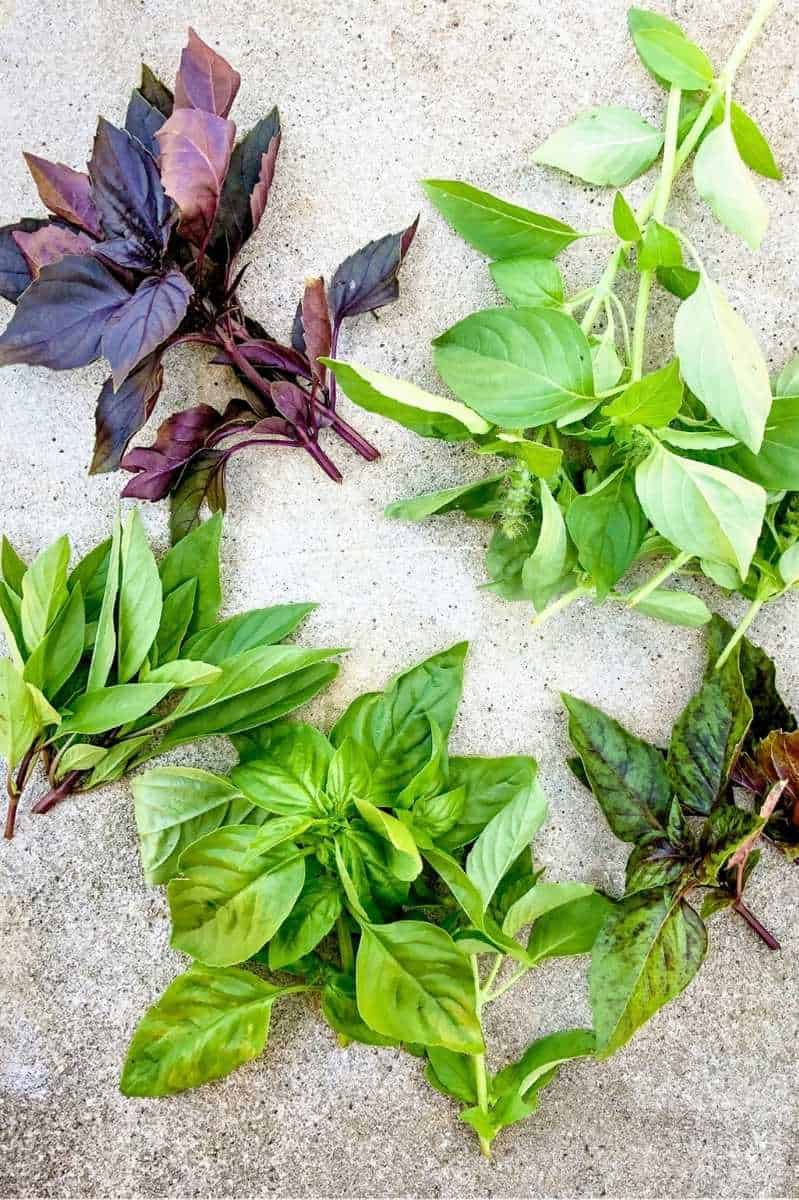
Table of Contents
Why should I grow basil?
It probably goes without saying that basil is a delicious addition to any vegetable garden. This versatile herb is great in salads, pesto, sauces, pizza, sandwiches, soups, pasta, and tons of other dishes.
But did you know that basil also pulls double duty in the garden? It’s an excellent option for companion planting. Basil’s aromatic leaves tend to repel all kinds of pests in the garden. We plant many different varieties of leaf basils throughout the garden to help control pests organically (and harvest lots of yummy leaves).
What kind of basil should I grow?
There are so many different kinds of basil with varying, nuanced flavors that we highly recommend trying out several different kinds in your garden. However, if you’re looking for classic pesto basil or one that can be thrown into your favorite tomato sauce—Genovese or sweet basil (Ocimum basilicum) is what you’re looking for.
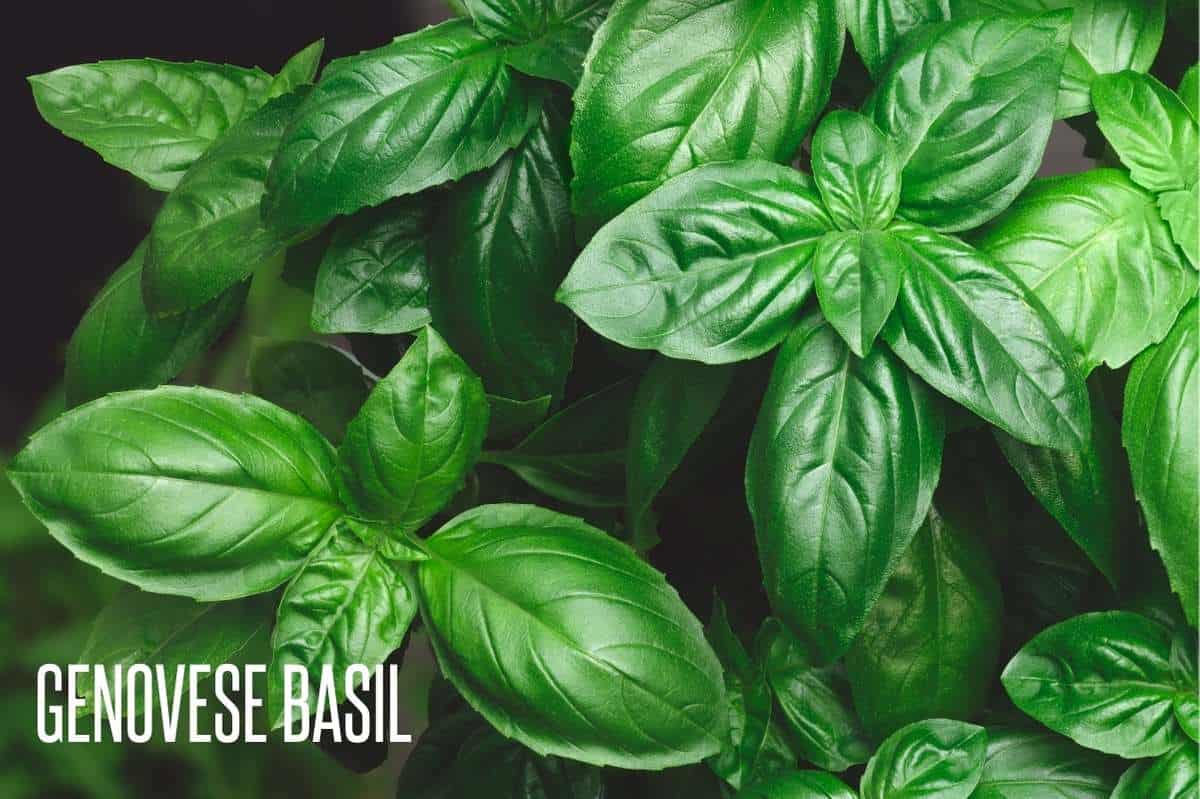
If you’re looking for some fun basil cultivars to broaden your horizons, here are a few of our favorites:
- Purple Ruffles Basil: Exactly as the name sounds! Deep purple leaves with ruffled edges (and a traditional basil flavor) make this herb a striking addition to any salad.
- Lemon Basil: This basil is common in Southeast Asian cooking, and it’s prized for its lemony flavor.
- Siam Queen Thai Basil: This basil is a must-have for curry, pad Thai, and other classic Thai dishes. The plants and flowers are beautiful enough to be ornamental, and they are loved by pollinators.
- Cinnamon Basil: As its name suggests, this spicy basil has a hint of cinnamon and licorice flavor that really adds warmth and depth to your favorite dishes.
- Dark Purple Opal Basil: The darkest of the purple basils, these leaves are so dark they can almost look black! A real stunner in the garden.
- Holy Basil (Tulsi): This medicinal herb has a ton of different benefits from improving cognitive function to reducing stress. It’s an adaptogenic herb used frequently in Ayurvedic medicine.

One important (and fun!) note on growing purple basil cultivars: when growing purple basil from seed, don’t be surprised if one or two of your seedlings looks green, speckled, striped, or otherwise variegated!
Sometimes the genetic code of purple basil seedlings doesn’t fully transfer into every seed. The leaves will still taste great, and you can enjoy your very own genetic marvel!
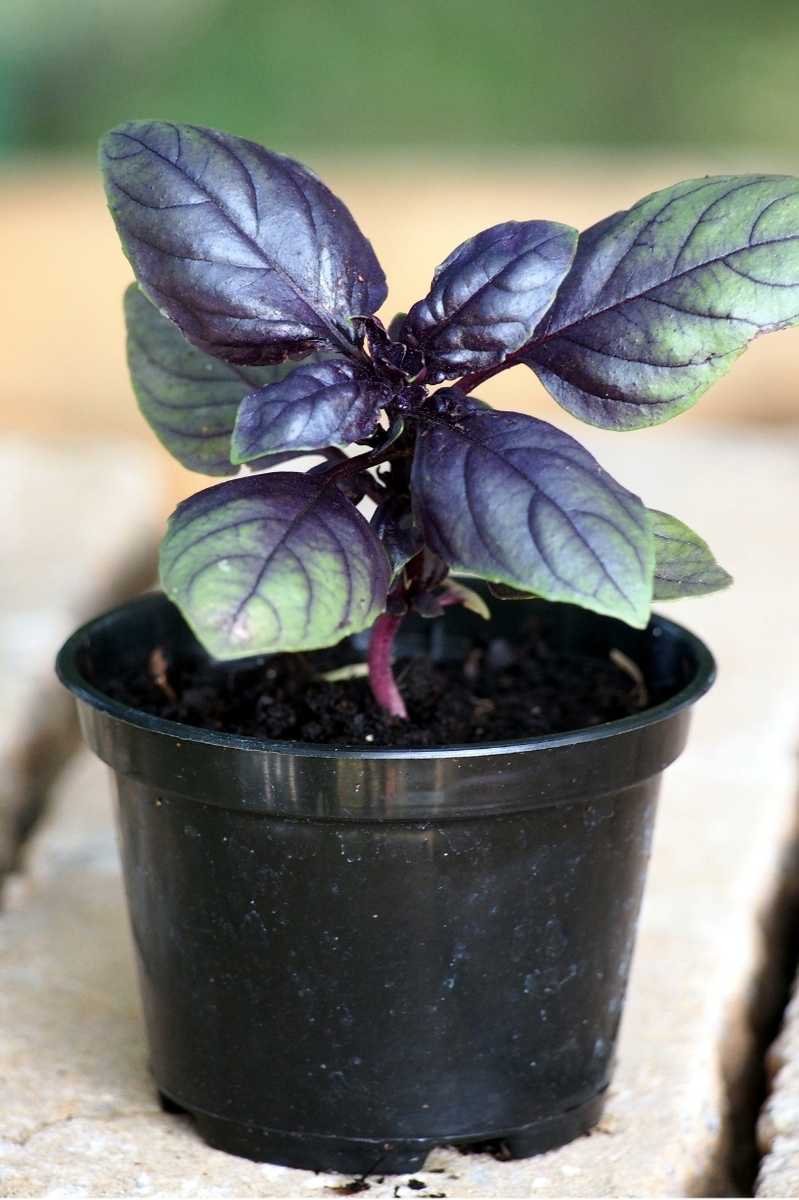
Should I grow basil seeds or plants?
If you’re in a rush to get basil in your garden, you can typically find sweet or Genovese basil seedlings pretty easily at your local garden center. But if you want to grow lots of basil (which we recommend because it’s a great companion and pollinator plant) and grow a variety of cultivars, we recommend grabbing some seed packets and starting your own seeds.
Is it hard to grow basil from seed?
Not hard at all! Basil is a fast-growing herb that is easy to germinate from seed. If you’re new to seed starting, basil is one of the first herbs you should try out.
Download Printable Basil Growing Guide »
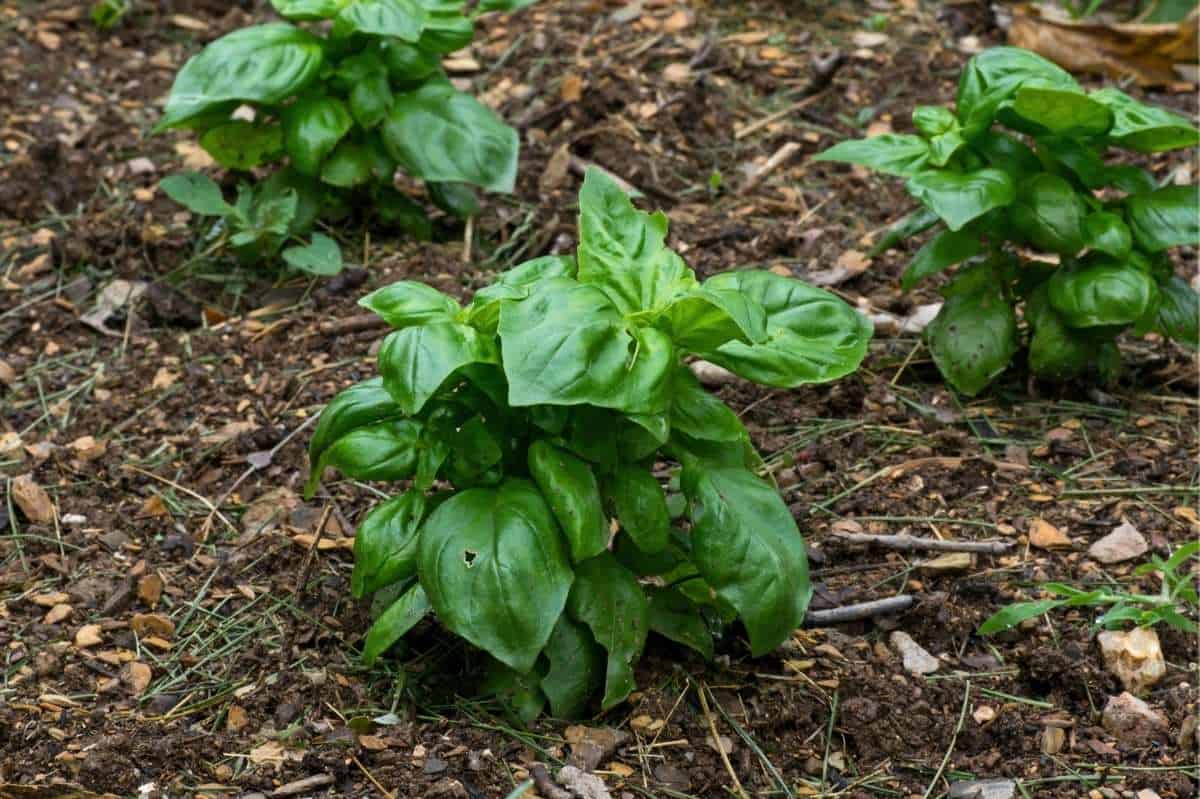
Should you soak basil seeds before planting?
You can, but we’ve run tests in the Growfully gardens and haven’t seen any increased germination rates by soaking basil seeds before sowing.
When should I plant basil?
Basil is a tender annual herb that is not cold hardy—in fact, it is incredibly intolerant to freezes and frosts and should only be planted out in the garden after the last frost date in your area. In fact, we recommend waiting to transplant basil seedlings out in the garden until 7-10 days after your last frost date just to be certain the cold weather is done.
How do I plant basil seeds?
Planting basil from seed is a breeze and requires no special knowledge or tools. Here’s how to do it:

- About 6-8 weeks before the last frost in your area, prepare seed starting trays, newspaper pots, or peat pots. Fill with sterile seed starting medium.
- Sow 2-3 basil seeds per cell or pot, planting them 1/4″ deep and firming the soil well over top.
- Keep the trays or pots warm (between 75°F and 85°F) and moist until germination—which should happen in about 5-7 days in ideal conditions. You can help maintain these conditions by using a humidity dome or by covering your trays with plastic wrap, removing once the seeds have germinated.
- Once the seedlings have at least one set of true leaves, thin to just one seedling per cell.
- Once the seedlings have six sets of true leaves, pinch off the top set of true leaves—this promotes the growth of strong, bushy plants.
- As your basil plants grow, you can pot them up into increasingly larger containers—make sure to bury the stems to create stronger plants.
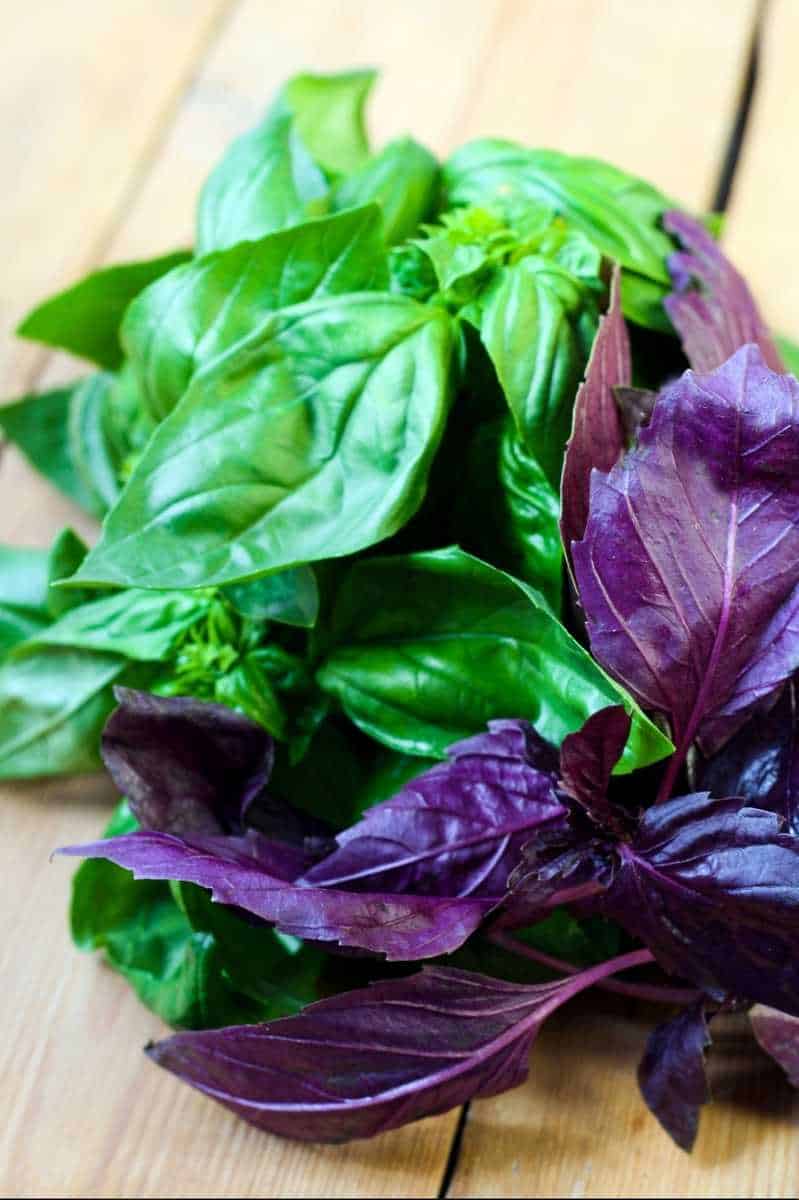
How do I grow basil from cuttings?
Basil is also incredibly easy to grow from cuttings, AKA: propagation. Just clip off a stem next to a leaf node (where the leaf connects to the stem)—this is the location where the plant has the highest concentration of rooting hormone—and place it in water.
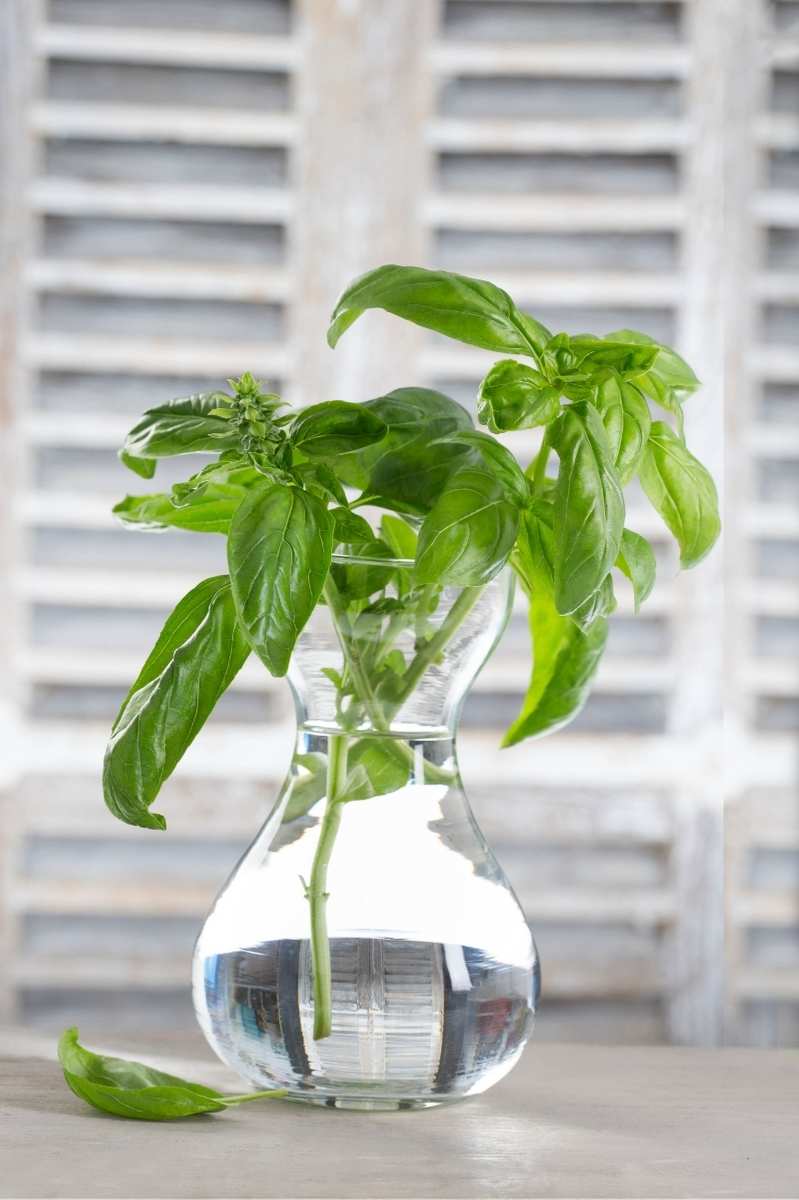
Change the water every other day or so, and you should start to see roots forming along the stem within a week. Once the roots are robust, plant the seedling in good quality potting mix (or right in your garden). Voilà! Another basil plant.
Growfully Protip
Propagation is a great way to get more bang for your buck from a store-bought basil plant. Grab a robust plant with many strong stems, and your single plant purchase can become five or even more individual plants!
Where do you plant basil seeds?
Basil needs to grow in full, direct sunlight in rich, well-draining soil. You can direct sow basil seeds in the garden, although they will take 6-8 weeks before they are ready to harvest. Sow basil seeds anywhere you have an opening in your garden to promote pollinator activity and reduce pest pressure.
Growfully Protip
Along with lemon balm and citronella, basil also works well as a natural way to repel mosquitos in your yard and garden. Just brushing up again the plant releases the herbal oils into the air, and the scent keeps the bugs away!
How long does it take to grow basil from seed?
Seedlings will be ready to go in the ground (and shortly after that, ready for first harvest) within 6-8 weeks.
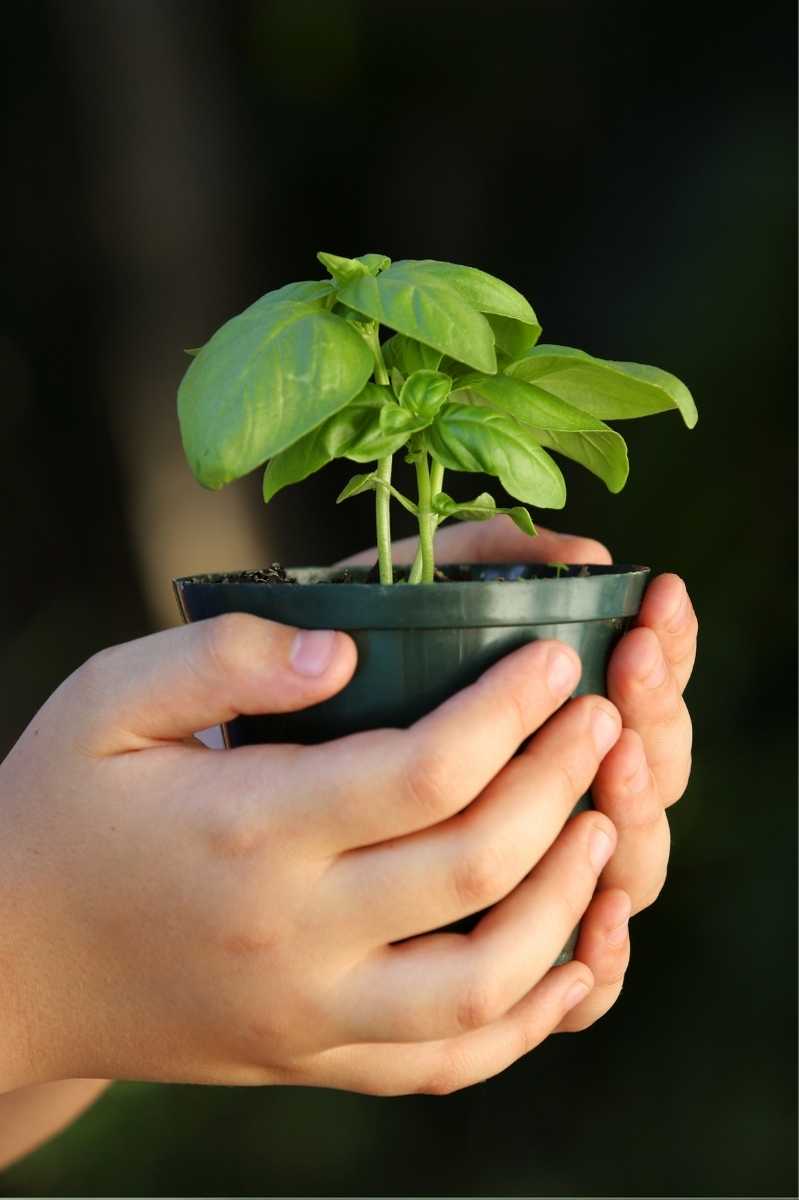
How long does a basil plant last?
A basil plant will happily grow and produce all the way up until your first fall frost—giving you lots of delicious basil leaves all growing season long!
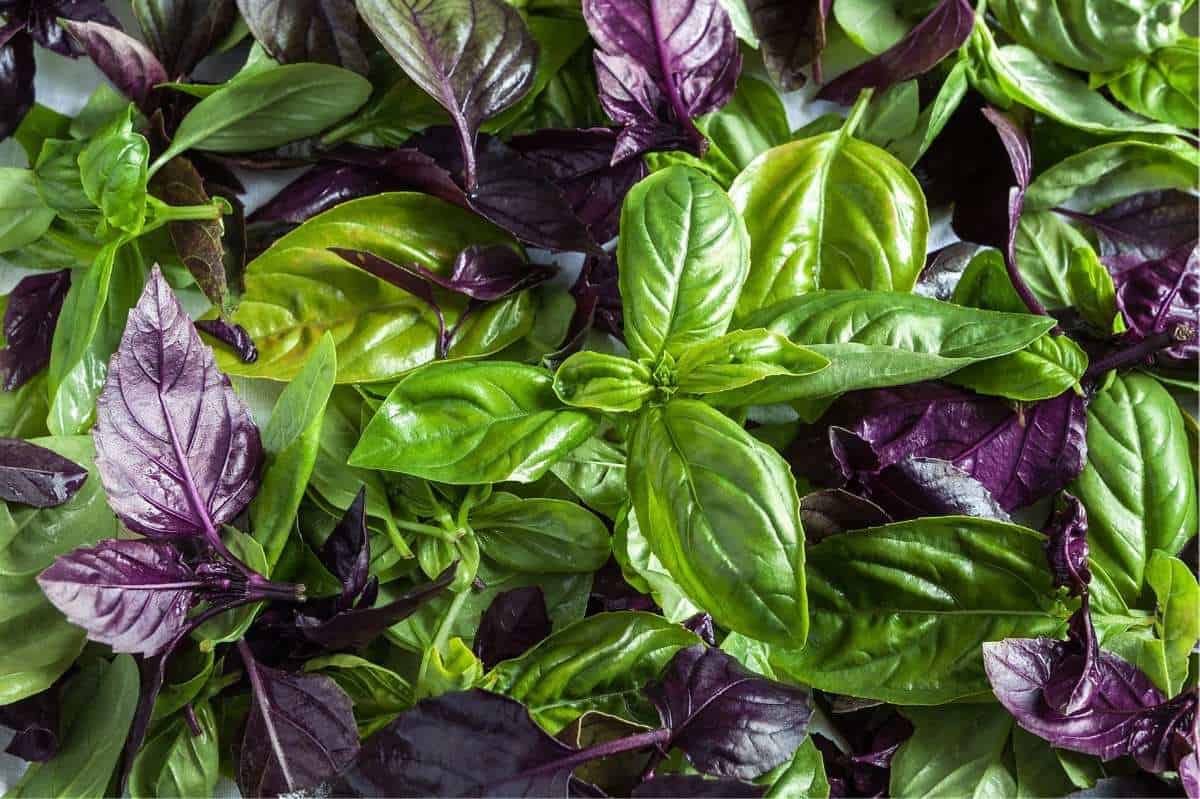
What can I plant with basil?
Because of its pest-repellant properties and pollination attraction (particularly to the flowers), basil is a great option throughout your garden!
Garden folklore also dictates that, when grown together, the flavor of both basil and tomatoes improves (as well as peppers). It’s hard to find a scientific study that confirms this, but it doesn’t hurt to grow the two together—the basil will happily grow in the shade of a growing tomato plant, and the two crops are so delicious together that growing them side by side makes for easy harvesting for a lunchtime Caprese salad when combined with fresh mozzarella cheese!
How do you care for basil?
Basil is relatively easy to care for, just as long as you remember one very important fact—herbs want to be harvested! The more you harvest from your basil plant, the more it will produce. Many people are afraid to harvest from their tall, spindly basil plants, when in fact, that’s exactly what the plant needs to become bushier and produce more leaves! Harvest from your basil plant every few days in the summer.
Growfully Protip
To grow bushy, robust basil plants, make sure to cut the stems every 1-2 weeks in the summer. Snip off the top section of the main stems and enjoy those leaves. The plant will grow back bushier and stronger.
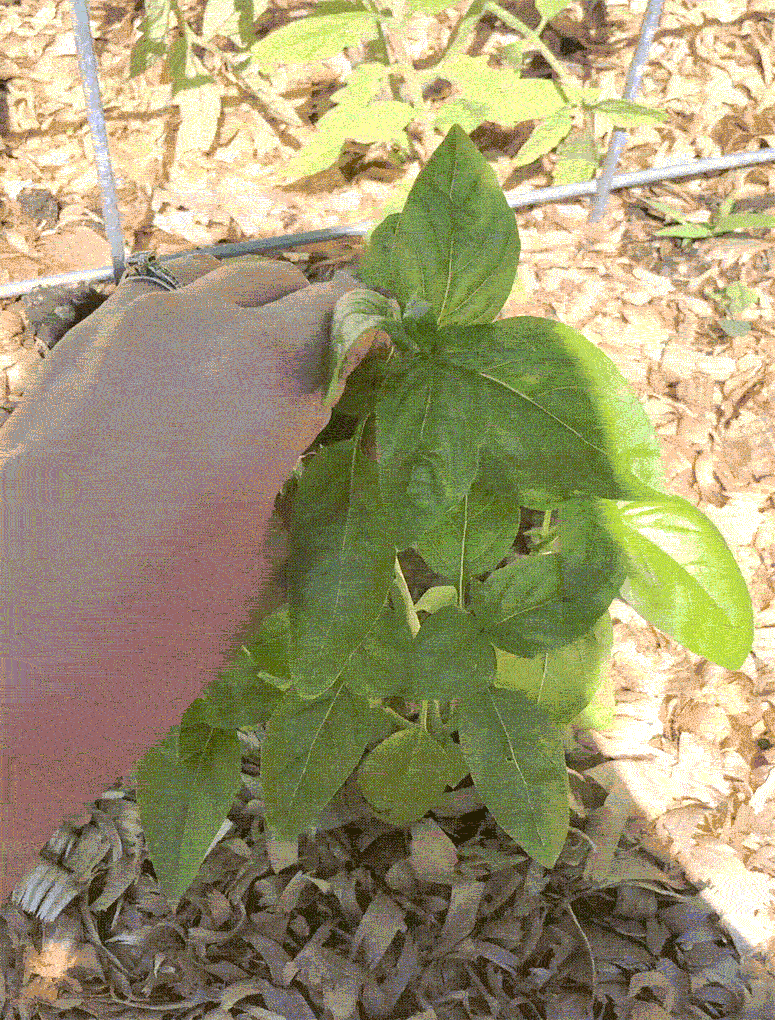
Basil is not a heavy feeder and won’t require much (if any) fertilizer if your soil is rich and well-amended with organic matter and compost. If your plants are looking pale green, you can hit them with a little fast-acting nitrogen fertilizer (like diluted fish emulsion), but that’s rarely necessary for most organic gardens.
Basil does appreciate a nice layer of mulch (we like to use pine shavings or shredded leaves) to prevent weeds, regulate soil temperature, and retain soil moisture.
How do you harvest basil?
Harvesting basil is as easy as clipping off some individual leaves or entire stems or stalks. Don’t wait to harvest! Harvest leaves early and often to grow strong, bushy plants.
Growfully Protip
It’s easy to freeze extra basil leaves by packing them into an ice cube tray, covering them with olive oil, and popping them in the freezer. Here is our favorite how-to on freezing basil.
How to grow basil: troubleshooting
Basil is relatively trouble-free thanks to its low fertilizer needs and pest repelling properties, but here are a few more common issues and how to tackle them:
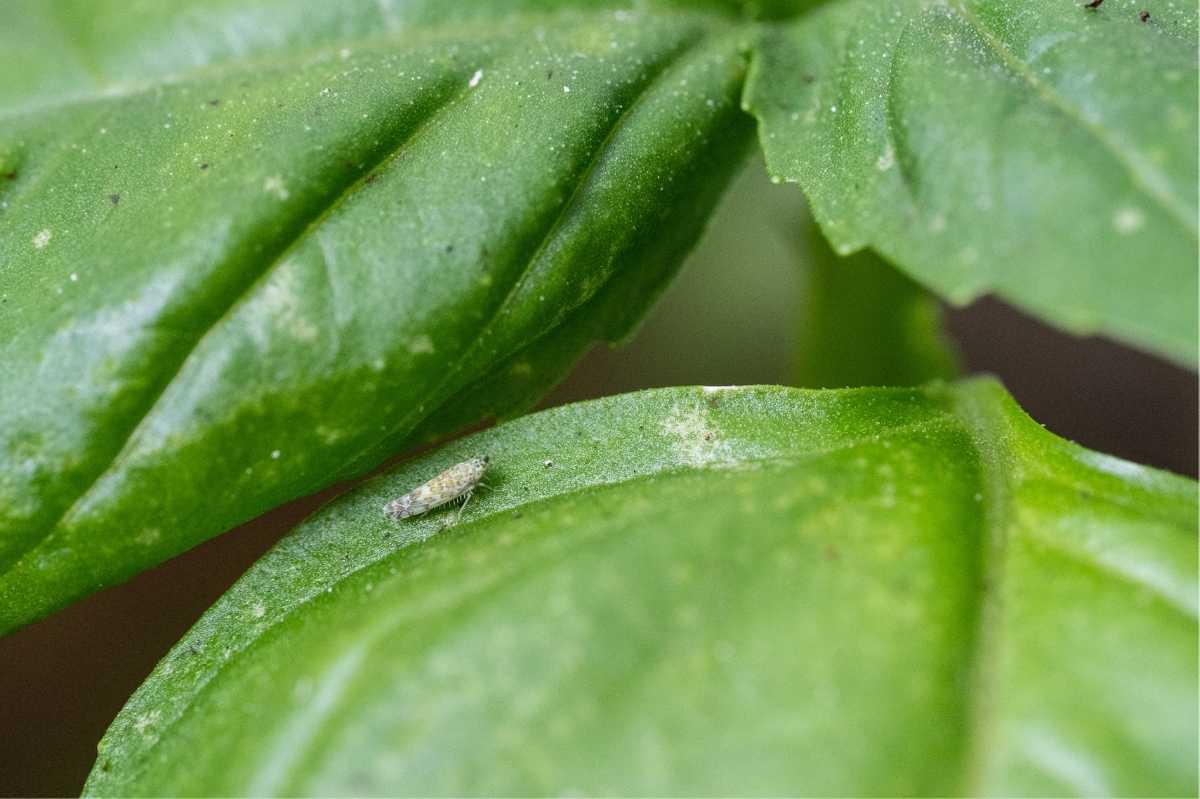
- Aphids: Probably one of the most common pests on basil plants are aphids, who don’t seem to be bothered by the strongly aromatic leaves like other insects. Control aphids by handpicking/smashing, rinsing off with a strong hose, using Diatomaceous Earth, trying neem oil, or using insecticidal soap.
- Japanese beetles: While basil isn’t a favorite of these destructive beetles, they will munch on the tender leaves if nothing better is available. Japanese beetles can be controlled by hand-picking (or washing away with a hose), pyrethrin-based insecticides, or neem oil.
- Slugs and snails: Just like Japanese beetles, slugs and snails don’t always pick basil first, but they will munch on the leaves (especially tender new growth) if that’s what’s around. Our slug control methods will work to protect basil plants from slug and snail pressure.
Download Printable Basil Growing Guide »

How to Grow Basil
Materials
- Basil seeds
Tools
Instructions
- Give them lots of light. Basil needs full sunlight to really thrive.
- Give it time to grow. We recommend starting your seeds indoors, as it takes 6-8 weeks to grow basil from seed.
- Keep them warm. Basil does not tolerate cool weather well. Wait until 7-10 days past your last frost date to plant your basil out in the garden.
- Harvest, harvest, harvest! The more you harvest your basil, the happier and bushier your plants will be.
- Make more plants. You can grow more basil plants from cuttings! Clip a stem next to a leaf node, place it in water in a sunny spot, and wait for roots to grow. Now you have a new basil plant for your garden!
- Use them for companion planting. Not only does basil taste great, but it is also a perfect companion plant for lots of produce. It can repel pests and attract pollinators, so plant it all around your garden.

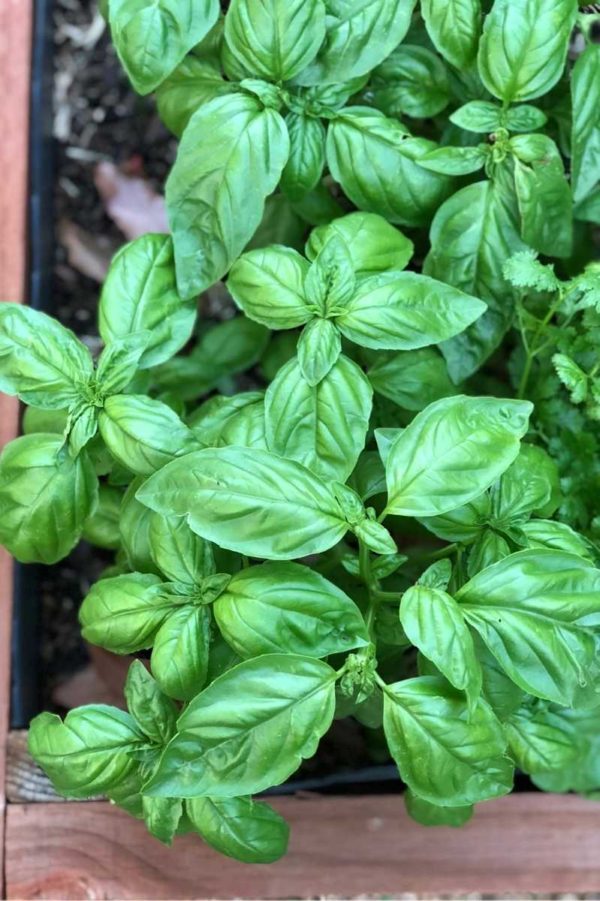






Thank you Cassie for your comprehensive post on how to grow basil. I have learnt much. Although I have planted basil for years and enjoyed the result, last years crop was damaged by moss. I applied Neem Oil but no result. I am confident you have a solution which I look forward to. Thank you.
Hi, Cassie.
Nice article about growing Basil. I have two plants in pots that were outdoors most of the summer. Now that the weather is getting colder, I have brought them indoors under a grow light.
One aspect of growing Basil I am curious about: because they are annuals, will they die by themselves when they are ready? Or is there a point at which I can decide to chop them down, throw them onto the compost pile, and re-use the pots?
Basil plants technically can be grown as a short-lived perennial if you keep it safe from freezing. But that “short-lived” part is really true—I think the longest I’ve ever seen one basil plant grow was right around 10-12 months. Past that, and they start to get very spindly, woody, and have very low production. I say grow it as long as it’s producing, and then when it seems like it’s reaching it’s twilight, compost and reuse the pots!